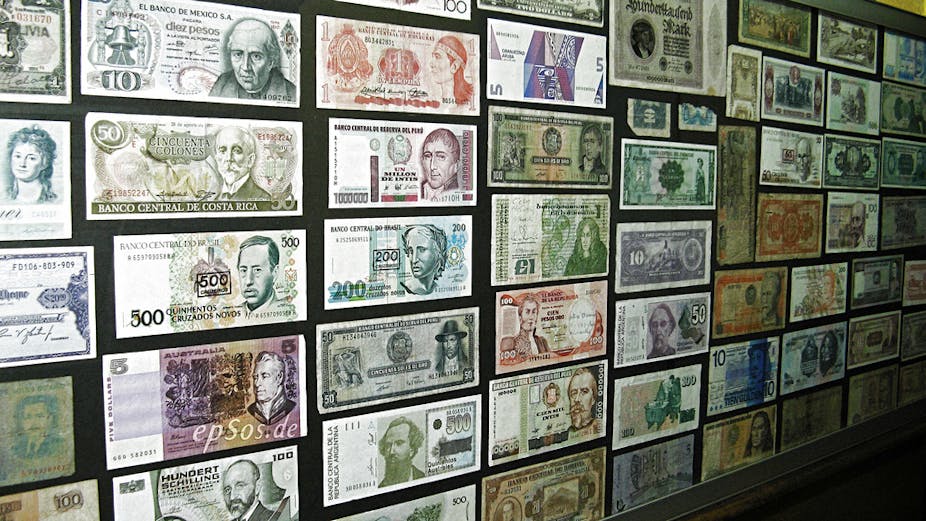Authorities in New York have announced they are launching an investigation into the manipulation of the world’s biggest financial market – the US$5.3 trillion a day traded in currencies. New York regulators join authorities elsewhere in the US as well as in the UK, Switzerland and Germany.
Martin Wheatley, the UK’s chief financial regulator, has declared the scandal is likely to be “as bad as Libor”.
If these allegations are proved to be true, several of the world’s largest banks are likely to be hit with massive fines and legal fees, not to mention the damage to their reputations. And this would come on top of expensive payouts banks have already made for mis-selling PPI, manipulating Libor, mis-selling swaps and various other misadventures.
Given the huge potential costs, regulators and bank bosses alike are asking themselves how could this happen again, and some have started to blame the people involved. With this in mind, many banks have already begun suspending key traders.
Others have started to blame the technology and banks have responded by banning their traders from chat rooms which they allegedly used to manipulate currency rates.
But changing the personnel and technology is likely to do very little. The real root of the problem is the design of the market.
Designed to be rigged?
The foreign exchange market has some features which make rigging far more likely. It is highly concentrated, with just four banks controlling more than 50% of global trading. Half of the world’s market is concentrated in London and New York and trades between the US dollar, the Yen and the Euro dominate. Just 100 traders control the foreign exchange spot trading market, which is worth US$2 trillion a day.
The market is also highly opaque. When you buy or sell most things – even financial products – you know what the going rate is before you make the trade. You can also find out what others bought or sold for (and how much), after the transaction. That is not the case here. There is no publicly available information about the immediate price of currency, and traders are forced to rely on only daily or half hourly averages. Nor is there any information about what was traded at what price after the trades have taken place. The only way you can find out a price is to go individually to different dealers.
All this means that people who buy and sell currency never know whether they are really getting a good price. In addition, client have no idea what the actual volume of the trades which were placed each day. This is crucial information as it is one of the few good predictors of currency price.
Unregulated trading
Currency trading is completely unregulated; even practices such as insider trading which are illegal in other markets won’t land you in jail.
In response to this, many banks have introduced internal regulations which ban the more dubious practices such as making trades on your personal account before making a large deal for a client which you expect to move the market. Key players in the industry have also produced their own code of conduct. But, without any legal teeth it is hard to take these voluntary codes seriously.
The close networking among currency traders makes the market even more difficult to penetrate. Their job requires constant interaction with workers at rival banks and these networks often spill over from the workplace and into City bars and home counties golf courses. Competition can be fierce, but traders also collaborate extensively, sometimes even going against their own best interests to ingratiate themselves with a high-status trader in another bank.
This means traders often identify more with the currency market itself than their employer. One currency trader interviewed by Joris Luyendijk described the bank he worked for as a “shell” in which he would temporarily shelter. If one bank was getting uncomfortable, he would move to another. This lack of identification with the banks they worked for meant traders generally ignored attempts to develop responsible corporate cultures.
All this adds up to a very dangerous picture. The foreign exchange market is unregulated, opaque and controlled by a small tight-knit group of traders who have little commitment to their employers. If the allegations are true, these are the networks that provided the social infrastructure for rate fixing.
Of course, manipulating exchange rates is no victimless crime. These gains for some have come at a great cost for others.
Customers who frequently buy and sell foreign exchange might wonder whether they have actually been getting ripped off. Shareholders of large banks might also ask how much this latest round of shenanigans will cost them. And if any wrongdoing is proven, employees of these banks will worry that another big wave of fines might trigger further painful cost-cutting.
With more lengthy court cases on the horizon, the lawyers are the only people definitely rubbing their hands in glee.

